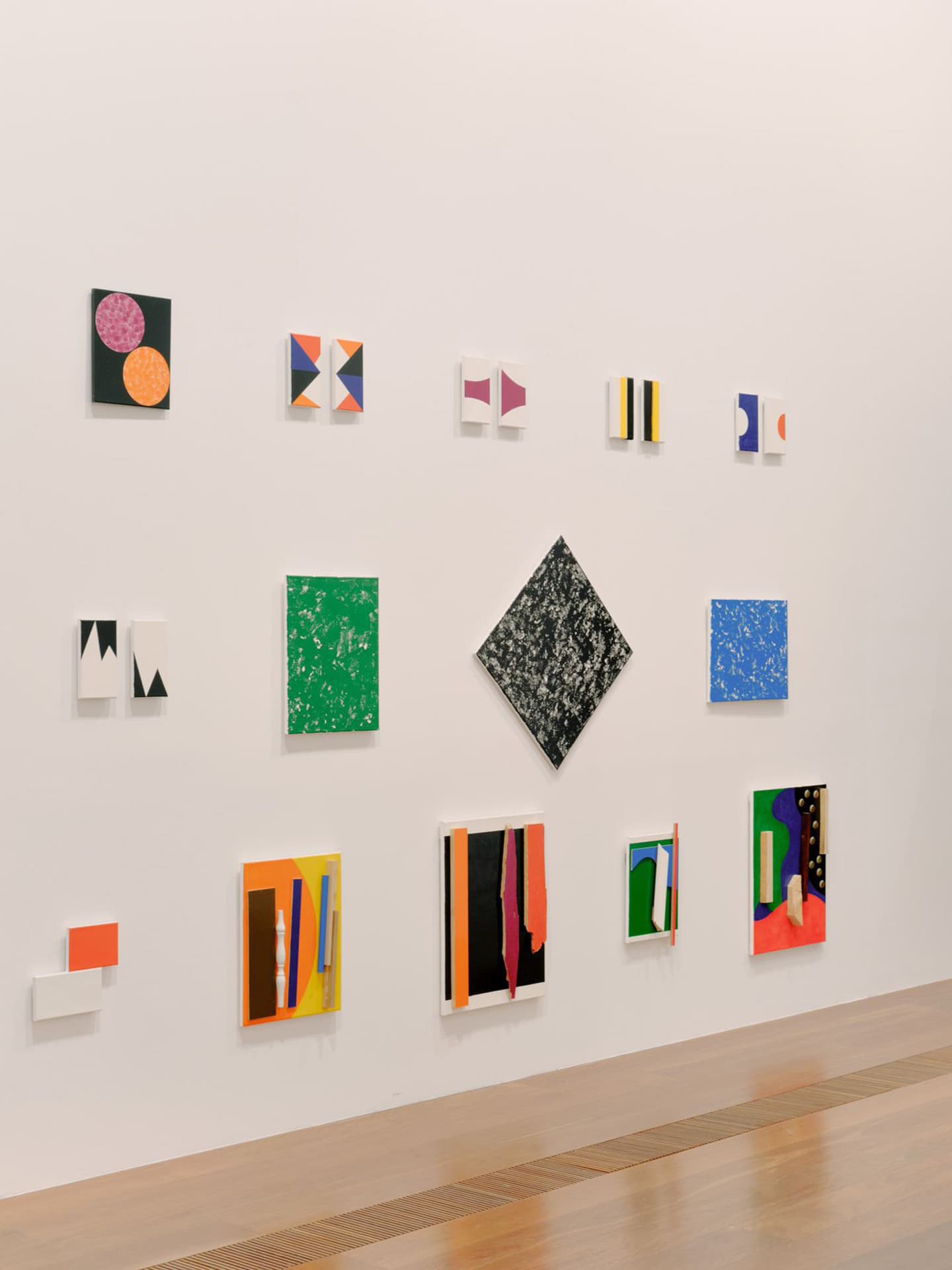John Nixon
John Nixon
(b. 1949, Sydney, d. 2020, Melbourne)
John Nixon was one of Australia’s most respected abstract artists. Commencing his practice in 1968, his first exhibition was held at Melbourne’s Pinacotheca gallery in 1973. Throughout his six-decade long career, Nixon remained dedicated to the exploration and furtherance of radical modernism. With a focus on constructivist and minimalist principles, his work took many forms, including painting, collage, printmaking, drawing, photography, film, dance, experimental music, art theatre direction, graphic design, curating and teaching. He is also recognised as a frequent collaborator with and generous mentor to many artists across generations.
Nixon’s works in Melbourne Now are drawn from the artist’s last solo exhibition, John Nixon: Groups + Pairs 2016–2020, held at Anna Schwartz Gallery in March 2020. Across the series and pairs of paintings Nixon explores relationships of colour and geometric form, using a range of art and non-art materials, and sometimes incorporating objects from everyday life into the works. Emblematic of his rigorous and inventive approach to non-objective and abstract art, the works are part of Nixon’s wider project, the Experimental Painting Workshop (EPW), a term he coined in 1995 to describe his painting practice.
‘Painting should be engaged in the elimination of the non-essential,’ Nixon wrote in his 1994 manifesto. ‘One is dealing with the specific qualities which constitute painting; colour, texture, brushstrokes, size, thickness of stretcher, shape, design [and] abstract/formal problem solving.’
Following Nixon’s death in August 2020, Groups + Pairs stayed open until the end of the year, in recognition of both the artist’s life and career as well as his longstanding relationship with Anna Schwartz Gallery.
Nixon trained at Preston Institute of Technology and the National Gallery School in Melbourne in the late 1960s. In 1979, he established the gallery Art Projects, where he exhibited his own work, and work by other artists of his generation including Jenny Watson, Imants Tillers, Tony Clark, Mike Parr, Peter Tyndall and Robert Owen. Art Projects, which ran until 1984, is regarded by many as the inspiration for subsequent artist-run spaces in Australia. Nixon was the director of the Institute of Modern Art in Brisbane from 1980 to 1982, and 1987 to 1989. In 1982 he represented Australia at documenta 7 in Kassel, Germany. In 2001, a survey exhibition of his work was shown at the Stiftung für Konkrete Kunst in Reutlingen, Germany. Nixon continued to exhibit extensively in Australia and internationally right up until the end of his life. His wife Sue Cramer and daughter Emma Nixon continue to care for and curate the archive of his works, which fills his studio in Briar Hill.
Nixon’s works are held in every major state museum collection in Australia. Selected international public collections that hold his work include the Solomon R. Guggenheim Museum, New York; Muzeum Sztuki, Łodź; Foire National d’Art Contemporain, Paris; Stiftung fur Konkrete Kunst, Reutlingen; The Artists Museum, Łodź; Herning Kunstmuseum, Denmark; Daimler Chrysler Collection, Berlin; Kunstmuseum Esbjerg, Denmark; Espace d’Art Contemporain, Demigny; and National Gallery of Contemporary Art, Seoul.
